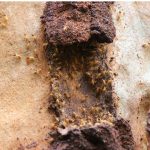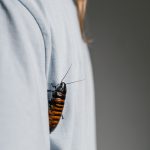The tiny creatures known as booklice have a misleading name. Despite their association with books, they are not actually lice and pose no direct harm to humans. However, misconceptions about booklice abound, leading to unnecessary concern and sometimes overzealous attempts at eradication.
In this article, we will delve into the world of booklice, examining their characteristics, behaviors, and their actual impact on human life. Additionally, we will explore effective strategies for managing booklice infestations, including the services offered by Eminent Pest Control.
Understanding Booklice: What Are They?
Booklice, scientifically known as Psocids, are minuscule insects measuring only about 1-2 millimeters in length. They are often mistaken for lice due to their name and size, but they are not parasitic and do not feed on blood or skin. Instead, booklice are scavengers that primarily feed on molds, fungi, and organic debris found in humid environments. Their preferred habitats include areas with high moisture levels such as kitchens, bathrooms, basements, and, yes, even libraries where books might provide a suitable environment.
The Myth of Booklice Infestation
One of the most common misconceptions about booklice is that their presence indicates poor hygiene or a dirty environment. This belief can lead to unnecessary panic and misguided attempts to eliminate them. In reality, booklice are attracted to moisture and humidity rather than dirt or filth. They thrive in damp conditions and can multiply rapidly when environmental factors are favorable.
Another myth is that booklice bite humans or pets. Unlike true lice or other parasitic insects, booklice do not have mouthparts designed for biting. They pose no direct threat to humans, animals, or structures. Their impact is primarily indirect, related to their feeding habits and potential for nuisance rather than harm.
The Harmless Nature of Booklice
While booklice do not pose a direct threat to humans, they can still be a nuisance under certain circumstances. Their presence in large numbers can be unsightly and may indicate an underlying moisture problem that needs to be addressed. Additionally, their feeding activities on mold and fungi can sometimes damage paper products such as books, documents, or wallpaper, although this is rare and typically occurs only in severe infestations.
It’s important to note that booklice are not vectors for diseases and do not transmit pathogens to humans. Unlike some other household pests, they do not pose a health risk through contamination of food or surfaces. Therefore, the primary concern with booklice is more about prevention and control rather than immediate health consequences.
Effective Strategies for Managing Booklice
Given that booklice are attracted to moisture, the most effective way to control them is by addressing underlying humidity issues. Here are some practical strategies for managing booklice infestations:
- Reduce Humidity: Use dehumidifiers or air conditioners to lower indoor humidity levels, especially in areas prone to moisture buildup.
- Ventilation: Improve air circulation in affected areas by using fans or opening windows regularly to reduce stagnant air and humidity.
- Fix Leaks: Repair any plumbing leaks or water damage promptly to prevent excess moisture buildup.
- Remove Organic Debris: Clean up food crumbs, spills, and organic debris that can attract booklice. Regularly vacuum and dust areas where they are commonly found.
- Storage Practices: Store books, paper products, and other susceptible items in dry, well-ventilated areas. Consider using sealed containers for added protection.
- Professional Pest Control: In cases of severe infestations or persistent problems, consider seeking professional booklice control in Singapore for targeted treatments and advice.
Conclusion
In conclusion, booklice are not harmful to humans in the traditional sense. They do not bite, transmit diseases, or cause structural damage like some other pests. However, they can be a nuisance and may indicate underlying moisture problems that need attention.
By understanding the facts about booklice and implementing effective management strategies such as reducing humidity, improving ventilation, and practicing good sanitation, you can minimize their impact and prevent infestations.
For more targeted solutions and professional assistance, consider reaching out to Eminent Pest Control. Our expertise in booklice treatment in Singapore can help ensure a pest-free environment and peace of mind.
Remember, knowledge is key to dispelling misconceptions and taking proactive steps towards a healthier and pest-free home!
For more information, do not hesitate to get in touch with us today!








































